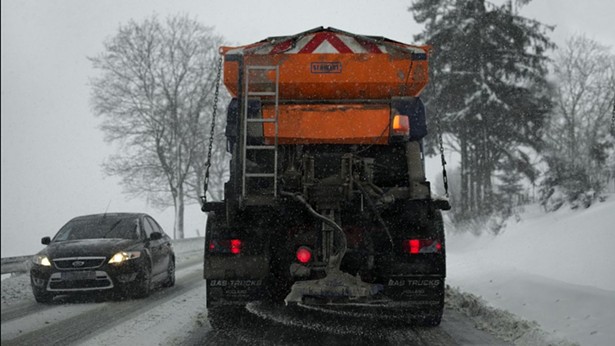Since 1938, salt has become a mainstay of winter road management. The US currently uses roughly 20 million tons of road salt a year. The trouble is: After it’s used, it doesn’t disappear. Salt leaches into groundwater, runs into streams, and collects in lakes and ponds. It builds up in the environment, so even if we use the same amount each year, the effects of salt on drinking water and ecosystems are increasing with every snowy winter that passes.
The worst impacts of road salt on ecosystems are on streamside communities of plants and animals, which are more sensitive than most humans to small fluctuations in salt content. Even when concentrations of road salt in streams don’t rise high enough to kill stream wildlife, road salt can harm the ability of fish, amphibians, and freshwater invertebrates to thrive and reproduce.
Nationwide, road salt contamination poses an increasing threat to drinking water for humans. In 2017, the Cary Institute of Ecosystem Studies in Millbrook released a study of 956 private drinking water wells in the Dutchess County town of East Fishkill, New York. More than half of the wells had sodium levels above federal drinking water standards. In a region where private wells are common—and rarely tested—salinization of drinking water could become a public health problem even if public water supplies aren’t impacted.
Alternatives to road salt exist, but none of them are perfect. One technique that has been shown to reduce the need for road salt is the application of salty brine. Salt dissolved in liquid doesn’t bounce off the surface of an icy road, and requires less salt to do the same job. Other options include molasses, beet juice, liquids left over from wine and beermaking, or brine from making cheese and pickles. But other methods come with different environmental problems.
The best option, according to Cary researchers, is to be smarter and more strategic about the use of road salt. When forecasts are predictable, trucks can spray brine before snow and ice falls, which requires less salt for the same effect. Another is outfitting trucks with applicator regulators, so the precise amount of salt needed can be measured and used.
Developing a road salt management plan, and keeping careful records about how roads are managed, can help local municipalities cut down on salt use, sparing the environment and municipal budgets at the same time. Complex problems like road salt contamination are nuanced, and solving them often forces communities to weigh competing priorities and develop new expertise.
Read more about the environmental impacts of salt in winter road management.

















